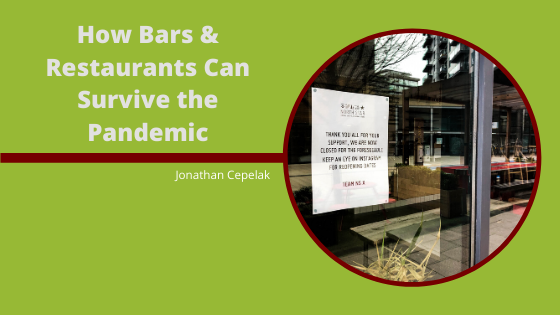By all accounts, COVID-19 hit restaurants pretty hard. From February to early in March, restaurant lovers began canceling their restaurant reservations and slowing down casual in-store restaurant visits. According to Eater.com, there was an 8% to 12% decrease in casual dining by late February. Additionally, the online reservation app Open Table saw a 31% decrease in reservations in the Seattle area, and the numbers continued to fall until both Seattle, and San Francisco saw declines of 49% and 43%, respectively.
Is It the End for Restaurants?
Some may think it’s over for the restaurant industry. It wasn’t just big-city restaurants that saw plummeting numbers. All restaurants did. Drive-thru and pickup orders did increase during that time frame. Many restaurant owners were also advised to overbook reservations. These measures helped many restaurants, but given the pandemic’s seriousness, restaurants must employ many more rescue measures to continue.
Specific Ideas for Improving Sales During COVID-19
These business owners have plenty of options, according to Hospitality.net. First, restaurateurs can up their gift certificate and voucher sales. Restaurateurs can encourage people to purchase these items via email lists and social media channels. Customers can use these certificates and vouchers at a later time, and restaurants get the much-needed infusion of cash now. It helps everyone.
Second, restaurateurs should use their social media channels to inform and engage their customers. Customers can share their favorite restaurant memories. They can also share what they’d like to do once they can move about freely once again. On the flip side, restaurateurs can write about what they’re doing to keep their guests safe: These safety measures can include offering car-side delivery to widening the space between tables, to name but a few.
Third, learning about upsells and add-ons can increase the amount each guest spends. Even if a restaurant gets fewer visitors and orders, it will lose less money if employees use upsells and add-ons correctly. Here’s an example of upselling. Say a customer orders just a regular cup of black coffee. The restaurant worker could encourage the guest to order a cappuccino or mocha instead. These items usually cost more.
An add-on sale is something that’s added on in addition to the entree. For example, a customer may order a pizza. An add-on would be bread sticks, dessert, or a drink or all of the above. The higher the check average per person, the more the restaurant makes and in a more efficient manner to boot.
Covid Isn’t the End of Restaurant Business
COVID-19 doesn’t have to be the death of restaurants if restaurateurs take active steps to keep the cash flowing. From delivery to add-ons and up-sells, restaurant owners have many options to keep their enterprises going long after COVID-19 is memory.

